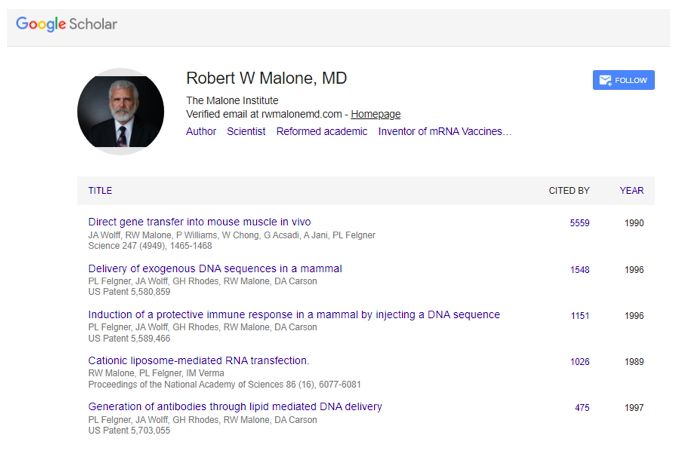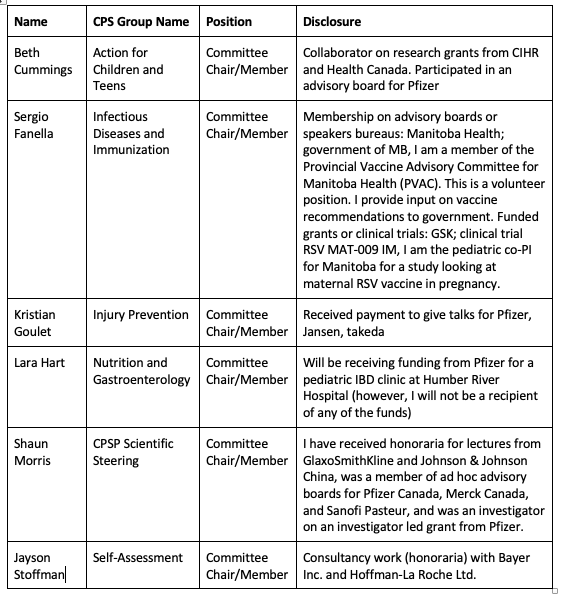Parental Authority for Covid Vaccination of Young Children: Ontario Law Case

All Global Research articles can be read in 51 languages by activating the Translate Website button below the author’s name.
To receive Global Research’s Daily Newsletter (selected articles), click here.
Click the share button above to email/forward this article to your friends and colleagues. Follow us on Instagram and Twitter and subscribe to our Telegram Channel. Feel free to repost and share widely Global Research articles.
***
In the recent family law case J.N. v. C.G., the divorced parents sought a court decision regarding which parent should have deciding authority for COVID-19 vaccination of their two youngest children, aged 10 and 12.
Justice A. Pazaratz gave the self-represented mother (J.N.) sole decision-making authority with respect to the vaccinations,[1] and awarded her costs in the motion;[2] on the basis that her concerns were the result of conscientious enquiry, were not unfounded or arbitrary, that the children had not been manipulated and held a consistent desire not to be vaccinated, and that psychological harm could be caused if they were forced to be vaccinated by their father (C.G.).[3]
Basically, Justice Pazaratz found that the mother was the more rational, closest and concerned adult to make the decision of vaccination for the two youngest children (which every adult is free to make for themselves), which also respects the children’s constant and independently expressed wishes; on the considered basis that this is the best outcome for the welfare of the children.
Justice Pazaratz found the father to be mean-spirited, unreasonable, offensive and misguided in his representations before the court, preferring to attack the mother’s credibility rather than address the issue. For example:
[79] With respect to the positions advanced by each parent.
- I respect the father’s decision to be guided by government and health protocols.
- I think the father did himself a disservice by focussing so much of his case on dismissive personal attacks on the mother. Those attacks are not only misguided and mean-spirited. They raise doubts about his insight with respect to the vaccine issue – and they also raise doubts about his appreciation of the nature and quality of the important relationship between the mother (as primary resident parent) and the children.
- I equally respect the mother’s decision to make exhaustive efforts to inform herself about the vaccination issue.
[…]
[emphasis added]
In his reasoned 27-page analysis, Justice Pazaratz expressly refused to take judicial notice (i.e., simply accept without tested proof) that the vaccines are safe and effective — on the mere basis that the government approved the vaccines, recommends the vaccines, and states that the vaccines are safe and effective. As such, there was no evidence before him that the vaccines are safe and effective.
Justice Pazaratz received the affidavit submissions of both parents solely as evidence of what the parents were considering in making their parenting decisions, not as evidence, one way or the other, regarding whether the vaccines are safe and effective:
[15] In this case the evidence provided more questions than answers.
- The father filed two affidavits.
- The mother filed one.
- They both relied extensively on unsworn “exhibits”, which were basically internet downloads.
- In addition, the father relied on numerous downloads from the mother’s social media accounts.
- They both consented to my receiving these materials, to demonstrate the sources of information which each of them is relying on in formulating their respective parenting position.
[emphasis added]
Justice Pazaratz expressly did not consider that his mandate included resolving the scientific and policy question of COVID-19 vaccine safety and efficacy:
[71] In a complex, important, and emotional case like this, it is important to remember the court’s mandate:
- I am not being asked to make a scientific determination. I am being asked to make a parenting determination.
- I am not being asked to decide whether vaccines are good or bad.
- I am not being asked to decide if either parent is good or bad.
- My task is to determine which parent is to have decision-making authority over L.E.G. and M.D.G. with respect to the very specific and narrow issue of COVID vaccinations. Each parent has clearly identified how they would exercise such decision-making authority.
[emphasis added]
The Court of Appeal for Ontario nullified the ruling of Justice Pazaratz, and substituted its own ruling giving sole decision-making authority with respect to the COVID-19 vaccinations to the father.[4]
The appellate court’s 23-page decision is dismissive, even overtly sarcastic at one point (paragraph 30), and, most importantly, denies the mother’s natural justice rights, in a matter of forced bodily injections no less, by misrepresenting the family court decision and disregarding the established law of evidence regarding judicial notice, while imposing its own order that the father have sole decision-making authority “with respect to the children’s vaccination against COVID-19”.
Leaving aside the central issue (circumvented by the appellate court) of whether the scientific question of the vaccine safety and efficacy needed to be answered for the family court judge to make his decision about parenting (the family court judge says not), let me explain the egregious appellate-court error about judicial notice this way:
- no court or reasonable person can have any doubt that the question of whether the COVID-19 vaccines are safe and effective, and the degrees to which they are safe and effective for children, is a matter that requires expert evidence, whereas
- a different formation of the same appellate court in 2021 determined the obvious — that matters that are the proper subject of expert evidence are, by definition, not compatible with judicial notice.[5]
The said different formation’s position is entirely aligned with the authoritative 2001 Supreme Court of Canada directive on the question:[6]
48 In this case, the appellant relies heavily on proof by judicial notice. Judicial notice dispenses with the need for proof of facts that are clearly uncontroversial or beyond reasonable dispute. Facts judicially noticed are not proved by evidence under oath. Nor are they tested by cross-examination. Therefore, the threshold for judicial notice is strict: a court may properly take judicial notice of facts that are either: (1) so notorious or generally accepted as not to be the subject of debate among reasonable persons; or (2) capable of immediate and accurate demonstration by resort to readily accessible sources of indisputable accuracy: R. v. Potts (1982), 1982 CanLII 1751 (ON CA), 66 C.C.C. (2d) 219 (Ont. C.A.); J. Sopinka, S. N. Lederman and A. W. Bryant, The Law of Evidence in Canada (2nd ed. 1999), at p. 1055.
49 The scientific and statistical nature of much of the information relied upon by the appellant further complicates this case. Expert evidence is by definition neither notorious nor capable of immediate and accurate demonstration. This is why it must be proved through an expert whose qualifications are accepted by the court and who is available for cross-examination. As Doherty J.A. stated in R. v. Alli (1996), 1996 CanLII 4010 (ON CA), 110 C.C.C. (3d) 283 (Ont. C.A.), at p. 285: “[a]ppellate analysis of untested social science data should not be regarded as the accepted means by which the scope of challenges for cause based on generic prejudice will be settled”.
[emphasis added]
Impervious to the establish law of evidence regarding judicial notice, the Court of Appeal in this case decided:
[45] Stated otherwise, judicial notice should be taken of regulatory approval, and regulatory approval is a strong indicator of safety and effectiveness. That being the case, where one party seeks to have a child treated by a Health Canada-approved medication, the onus is on the objecting party to show why the child should not receive that medication. The motion judge erred by reversing that onus.
[46] The respondent, as the parent seeking not to have the children vaccinated, had the onus to establish that, despite Health Canada’s opinion as to the vaccine’s safety and effectiveness, they should not be. That onus was not satisfied.
In the context, this means: “If the government states on its websites that a medical intervention is safe and effective, then trial-court judges in Ontario should take this government statement to be a proven fact, and administer the case accordingly.”
Basically, on my study of the decision, if I may paraphrase, the appellate court’s reasoning for circumventing the established law of judicial notice (and principles of natural justice) in this case about forcibly injecting children is: “well, it’s the government, and there’s a declared pandemic”.
The appellate court’s decision is contrary to law, and is both absolute and absurd.
Many unanswered follow up questions immediately arise, such as:
- How could a mother know or reasonably expect that a court will take untested evidence of government positions expressed on the internet as proven facts, and that she has an onus to disprove those facts?
- How could a mother know that the complex parenting conflict will, in the court, be reduced to a purely scientific question and that the government’s slogan-style answer to that question is taken to be a proven fact?
- Beyond the qualitative (and meaningless) “safe” and “effective” qualifiers, what degrees and types of risks versus predicted benefits are sufficient to override the parent and child decisions against injection?
- What amount and type of “overall benefit” or “best interest” is sufficient to override the child’s Charter rights and the caretaking parent’s authentic concerns?
- What about the myriad of follow up boosters?
- What about the palpable possibility that government agencies are partly or largely captured by influential entities having motives other than pure concern for public health?
- What about the money and politics, which are in play?
- How does the court preserve its constitutional role if it thus makes a blanket decision to defer to whatever position the government decides to have?
In addition, the appellate court makes several incorrect statements; for example, as follows.
(at paragraphs 19 and 31, respectively): “The information relied upon by the respondent [mother] was nothing but something someone wrote and published on the Internet, without any independent indicia of reliability or expertise” […] “The motion judge erred in failing to conduct any meaningful review of the appellant’s authorities, or the laws of evidence, in favour of the respondent’s [mother’s] questionable and unreliable internet printouts with no independent indicia of reliability or expertise.”
Actually, the mother’s affidavit contains a fact sheet from Pfizer, giving a long and detailed description of side effects, and the appellate court does not dispute the authenticity of the fact sheet.
Actually, the mother’s affidavit contains an article dated 26 August 2021 from the scientific journal Science, entitled “Having SARS-CoV-2 once confers much greater immunity than a vaccine—but vaccination remains vital – Israelis who had an infection were more protected against the Delta coronavirus variant than those who had an already highly effective COVID-19 vaccine”.[7] By independent estimates, Science is consistently ranked as the world’s third leading scientific journal.[8] The 26 August 2021 article’s sources are public and fully verifiable.
Actually, the mother’s affidavit contains a 2012 article published in PLoS ONE, entitled “Immunization with SARS Coronavirus Vaccines Leads to Pulmonary Immunopathology on Challenge with the SARS virus”.[9] PLoS ONE is a highly ranked peer-reviewed scientific journal. This article in PLoS ONE has been cited in the scientific literature more than 650 times, which is a very high number, including by many recent leading scientific-journal articles about COVID-19 vaccines.[10] All of this is readily verifiable using Google Scholar (which is a “CanLII” for globally published scientific articles).
(at paragraph 15): “The motion judge’s description of Dr. Malone, Dr. Lawrie and the other authors cited by the respondent – as leaders in their fields – seems to be based on nothing more than their ability to either create a website or be quoted in one. There is no apparent or verifiable expertise.”
Actually, Dr. Robert W. Malone’s record as a scientist is a matter of public knowledge, which is immediately verifiable in both the scientific literature and the U.S. Patent records. His Google Scholar profile is not difficult to find.[11] His 5 most cited scientific articles and US patents, all immediately verifiable, make it clear that he is eminently qualified, far beyond virtually every government public health officer, to make expert criticisms of the mRNA-based COVID-19 vaccines:[12]
Everything the family court judge wrote about Dr. Malone is correct and verifiable although imprecise in one instance:
[60] For example, the article submitted by the mother “Are People Getting Full Facts on COVID Vaccine Risks?” quotes Dr. Robert W. Malone, the inventor of the mRNA vaccine. Whether he is right or wrong about the current use of COVID vaccines is a matter for discussion and determination. But with his credentials, he can hardly be dismissed as a crackpot or fringe author. The mother referred to the following excerpt from the article:
The original inventor of the mRNA vaccine (and DNA vaccine) core platform technology currently used to create the vaccines is Dr Robert W Malone. Dr Malone has been expressing serious concerns […]
[emphasis added]
Should the judge be fatally faulted for loosely assimilating co-inventing and demonstrating the underlying technology that is the crux of the new mRNA vaccines to “inventing the vaccine”? Do the industry modifications in manufacturing the actual vaccine constitute “inventing the vaccine”? Who, if anyone, “invented the lipid-particle mRNA COVID-19 vaccine”?
(at paragraph 30): “Further, the materials from the Canadian Paediatric Society – attached to the appellant’s affidavit, and which state that the vaccine is safe and effective for children (and that its benefits outweigh its rare side effects) – clearly meet the criteria set out in the case law cited by the motion judge. That is to say, pursuant to ITV and Sutton, this is a well-known organization (whose objectivity and sources can be readily and easily assessed), and the information contained in its documents is capable of verification. Moreover, as the Canadian Paediatric Society is not a government agency, the motion judge should have been comforted knowing that its opinion is not formulated by a government official, or reliant only on government procured information.”
Actually, if the appellate court had spent any time applying its recommendation that “whose objectivity and sources can be readily and easily assessed”, it would have found a few relevant items on the website of the Canadian Paediatric Society:
Under “Sponsorship”, the organization has:[13]
The Canadian Paediatric Society’s activities and programs are funded through a wide variety of sources, including membership dues, revenue from continuing medical education events and annual conferences, publications, unrestricted grants from individuals, foundations and corporations, as well as government grants. Over the years, the CPS has developed mutually beneficial relationships with private sector companies. The resources offered by the private sector enhance our ability to fulfill our mission. For instance, sponsorships can help us expand our distribution network, allowing our resources on child and youth health to reach a wider audience than would otherwise be possible. The CPS welcomes corporations as supporters of our programs and activities and seeks corporate sponsors that operate in the best interests of children and youth.
[emphasis added]
Under “Competing Interests”, the organization has several declared conflicts of interest among its board members, executives, and members, such as, for example:[14]
Why would the appellate court want judges to presume reliability and accuracy of statements from such internet sources, rather than have the judges apply the strict threshold for judicial notice prescribed by the Supreme Court?
Several provincial appellate courts have denied their jurisdictions to fairly determine scientific questions related to government COVID-19 measures, by taking government experts to be correct on the apparent basis that the government must be right,[15] but this appellate court has gone further. This appellate court holds the view (expressly not shared by the family-court judge) that the scientific question is determinative in this case and that the government position expressed in generic terms on the internet should be accepted as proven fact without any government expert being required or cross-examined.
This appellate court in-effect wants to “simplify” all similar cases in this way: the government position should be taken as absolute, and the parent’s only option is to prove that their particular child would be at too high a risk compared to an unquantified benefit — “the parent seeking not to have the children vaccinated, had the onus to establish that, despite Health Canada’s opinion [taken as proven fact] as to the vaccine’s safety and effectiveness, they should not be” (at para. 46).
How did this happen?
Is the father’s legal team of three lawyers to be followed because the mother is self-represented?
Is it so unpalatable that a family-court judge in-effect took judicial notice that there was a live scientific debate about the risks and benefits of the COVID-19 vaccines?[16]
In fact, there can be little doubt that there is a live and unresolved scientific debate about the vaccines.
Death is not listed in the Pfizer list of side effects that was before Justice Pazaratz, however, it is well established that the COVID-19 vaccines can cause death, as seen from:[17]
- an increasing number of detailed autopsy studies (Choi et al., 2021; Schneider et al., 2021; Sessa et al., 2021; Gill et al., 2022; Mörz, 2022; Schwab et al., 2022; Suzuki et al., 2022; Tan et al., 2022; Yoshimura et al., 2022; Onishi et al., 2023),
- adverse effect monitoring (e.g., Hickey and Rancourt, 2022),
- a recent survey study (Skidmore, 2023),
- studies of vaccine-induced pathologies (e.g., Goldman et al., 2021; Kuvandik et al., 2021; Turni and Lefringhausen, 2022; Edmonds et al., 2023; Wong et al., 2023), and
- more than 1,250 peer-reviewed publications about COVID-19 vaccine adverse effects (React 19, 2022).
- There is also the known vaccine injury compensation programmes of states worldwide, which include death resulting from the COVID-19 vaccines (Mungwira et al. 2020; Wood et al., 2020; Crum et al., 2021; Kamin-Friedman and Davidovitch, 2021). Japan, Canada and the UK have granted compensation for COVID‑19 vaccine induced deaths (The Japan Times, 26 July 2022; Corbett, 6 September 2022; Wise, 2022).
To this we should add the incisive criticisms against the pharmaceutical-industry-funded vaccine clinical trials themselves (the supposed scientific basis for “safe and effective”), such as are published in the leading British Medical Journal, in which the raw data was hidden from independent researchers, and the trial designs were fatally flawed:
Why is it so difficult for an appellate court to admit the possibility that, when billion-dollar secret contracts are in play, and when the government structurally applies a self-reporting framework with manufacturers, government public health positions are not entirely and objectively based on actual and verifiable science, and that, therefore, the government should not be taken at its (website) word in establishing facts arising from complex and technical manipulations controlled by an industry that does not have a stellar reputation for safety?
In the present case, the family-court judge acted wisely, applying the principles of family law, whereas the appellate court was flippant, to the extent that a court can be flippant, and brings the province’s appellate judiciary into disrepute.
Finally, it is comforting to note that the appellate court’s decision in J.N. v. C.G. has already engendered bold and significant pushback from a judge of the family court in Ontario, in a similar case of parents having opposite positions regarding COVID-19 vaccination of their children, in which government pronouncements about “safe and effective” are at issue.[18] Although couched in terms of distinguished circumstances, the said pushback is as close to a “rebellion” as one can observe in a common law court system.
In an extensive analysis of the said appellate court’s decision, Justice R.T. Bennett explains point-by-point why the appellate ruling should not apply to the case before their court,[19] and concludes their analysis with:
666. The Charter of Rights ensures that accused persons have the right to a fair trial. This court finds that innocent children should and do have that same right.
There is hope, even during a declared and highly mediatized and politicized pandemic.
*
Notes
[1] J.N. v. C.G., 2022 ONSC 1198 (CanLII), https://canlii.ca/t/jmk30.
[2] J.N. v. C.G., 2022 ONSC 2225 (CanLII), https://canlii.ca/t/jnmlj.
[3] See Pazaratz J.’s decision, https://canlii.ca/t/jmk30, paras. 37, 75-78.
[4] J.N. v. C.G., 2023 ONCA 77 (CanLII), https://canlii.ca/t/jv9c5.
[5] R. v. J.M., 2021 ONCA 150 (CanLII), https://canlii.ca/t/jdnw3, at para. 35
[6] R. v. Find, 2001 SCC 32 (CanLII), [2001] 1 SCR 863, https://canlii.ca/t/521b.
[7] Meredith Wadman, “Having SARS-CoV-2 once confers much greater immunity than a vaccine—but vaccination remains vital – Israelis who had an infection were more protected against the Delta coronavirus variant than those who had an already highly effective COVID-19 vaccine”, Science, 26 August 2021, doi: 10.1126/science.abm1207, https://www.science.org/content/article/having-sars-cov-2-once-confers-much-greater-immunity-vaccine-vaccination-remains-vital, archived at: https://archive.ph/PnnWV.
[8] For example, Google Scholar has: https://scholar.google.com/citations?view_op=top_venues, accessed on 28 March 2023, archived history at: https://archive.ph/https://scholar.google.com/citations?view_op=top_venues.
[9] Tseng C-T, Sbrana E, Iwata-Yoshikawa N, Newman PC, Garron T, et al. (2012) “Immunization with SARS Coronavirus Vaccines Leads to Pulmonary Immunopathology on Challenge with the SARS Virus”. PLoS ONE 7(4): e35421. doi:10.1371/journal.pone.0035421. https://doi.org/10.1371/journal.pone.0035421
[10] For example: https://scholar.google.com/scholar?as_ylo=2023&hl=en&as_sdt=2005&sciodt=0,5&cites=10595293153265702610&scipsc, accessed on 28 March 2023.
[11] https://scholar.google.com/citations?hl=en&user=Jf1bApYAAAAJ, accessed on 28 March 2023.
[12] Ibid.
[13] https://cps.ca/en/about-apropos/sponsorship, accessed on 28 March 2023.
[14] https://cps.ca/en/about-apropos/competing-interests, accessed on 28 March 2023.
[15] Rancourt, Denis G. (2022) “Canadian court decisions on the constitutionality of Covid measures are invalid due to jurisdictional errors of law”, Ontario Civil Liberties Association, OCLA Report 2022-2 | 23 September 2022. https://ocla.ca/wp-content/uploads/2022/09/2022-09-23-OCLA-Report-2022-2.pdf
[16] See Pazaratz J.’s decision, https://canlii.ca/t/jmk30, paras. 63, 68-70, 79(d), 79(g), 79(j), 80-83, esp. para. 81.
[17] Citation details and links of the references use in the bullet points are given here: D.G. Rancourt, M. Baudin, J. Hickey & J. Mercier. “Age-stratified COVID-19 vaccine-dose fatality rate for Israel and Australia”, Correlation Research in the Public Interest, Correlation Brief Report, 9 February 2023 (40 pages), https://correlation-canada.org/report-age-stratified-covid-19-vaccine-dose-fatality-rate-for-israel-and-australia/
[18] J.W.T. v. S.E.T., 2023 ONSC 977 (CanLII), https://canlii.ca/t/jvd8k, paras. 602-666.
[19] Ibid.
Featured image is from Children’s Health Defense
This article has been archived for your research. The original version from Global Research can be found here.




